The Scarlet Macaw
Nine Things You Did Not Know about the Scarlet Macaw, and One You Did
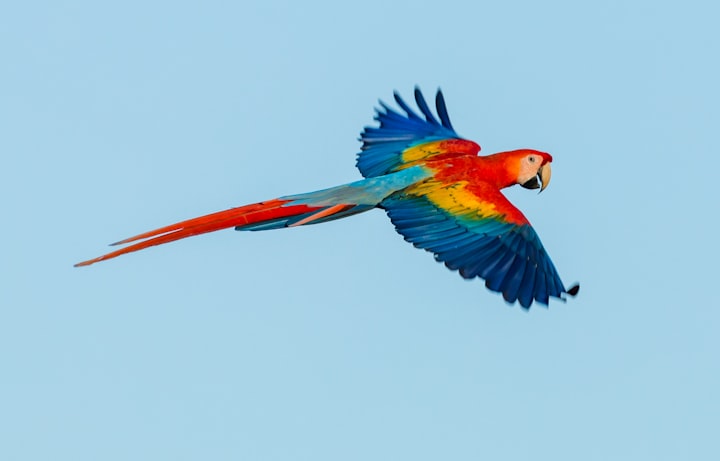
The Scarlet Macaw is a stunningly beautiful and majestic bird.
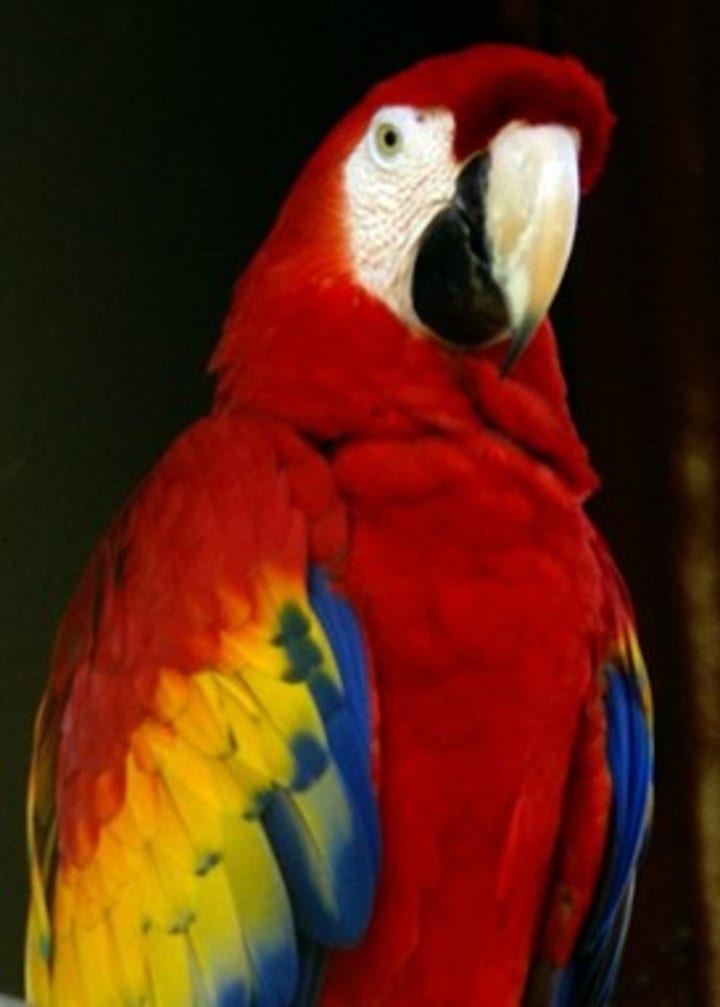
But you already knew that.
Number One:
There are two subspecies of Scarlet Macaw, the northern species can be found in Belize, Costa Rico, Honduras, Mexico, and Panama. The northern species is endangered and only has a couple of thousand birds left in the wild. El Salvador no longer has any left, with habitat loss being one of the leading causes.
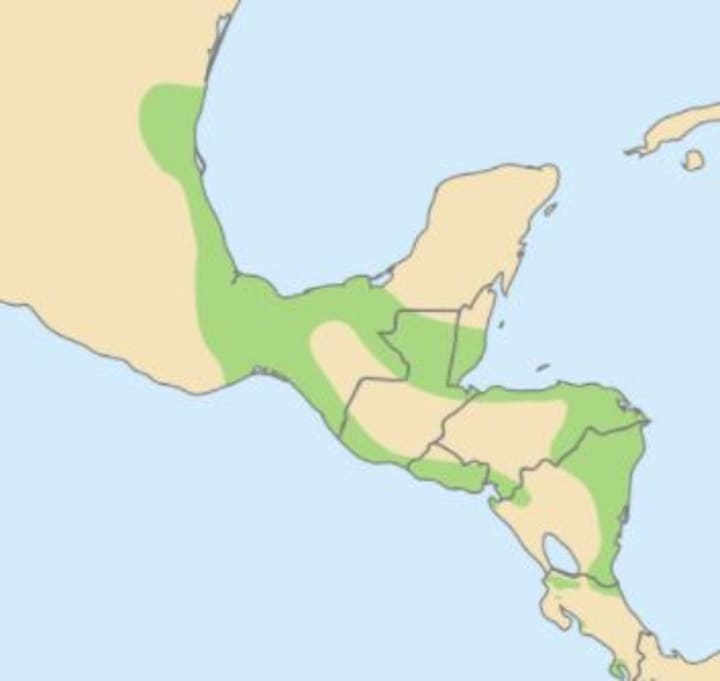
Number Two:
The Scarlet Macaw faces a twin threat. Habitat loss and poachers who capture baby birds to supply the pet market. Tragically the poachers will sometimes kill the adult bird – which has no value in the pet market – to get to their offspring.
Efforts are underway in which local people are paid to protect the birds. This has had some success but poaching still remains a major issue.
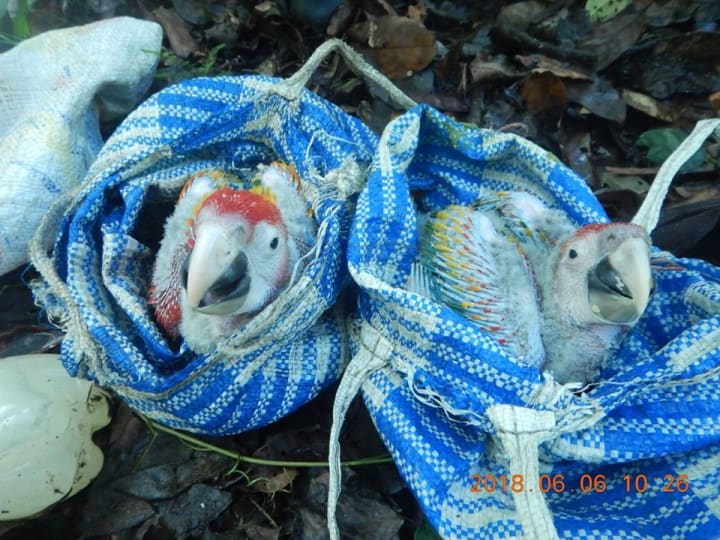
Number Three:
Scarlet Macaws are mainly vegetarians, do insects count. They eat fruit, nuts, seeds, and leaves. Oh, and also clay, originally it was thought that the clay helped removed toxins from their diet, but a recent theory is that it provides them with sodium.
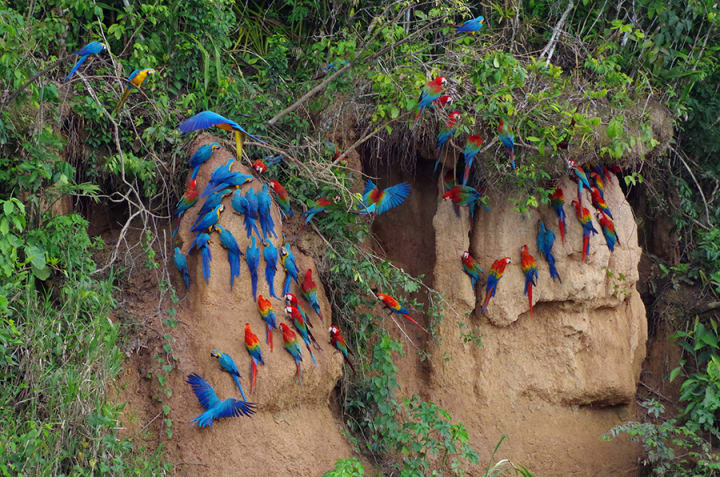
Number Four:
Scarlet Macaws have a long-life span. They can live up to fifty years in the wild. They have been known to live over 75 years in captivity. There eyes change color as they age, going from gray to a light yellow.
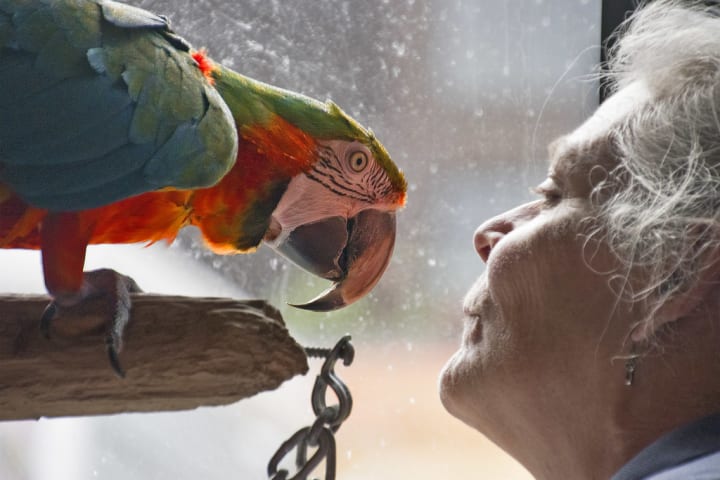
Number Five:
Scarlet Macaws are social animals. They live in family groups and are rarely found alone. It is very stressful for them to be separated from their group and kept alone. They are monogamous and mate for life.
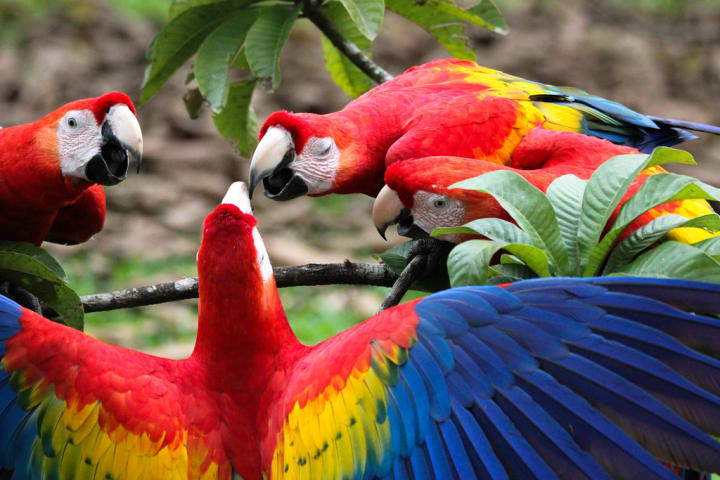
Number Six:
Scarlet Macaws like to be heard. They give off a harsh squawk and can be heard for miles.
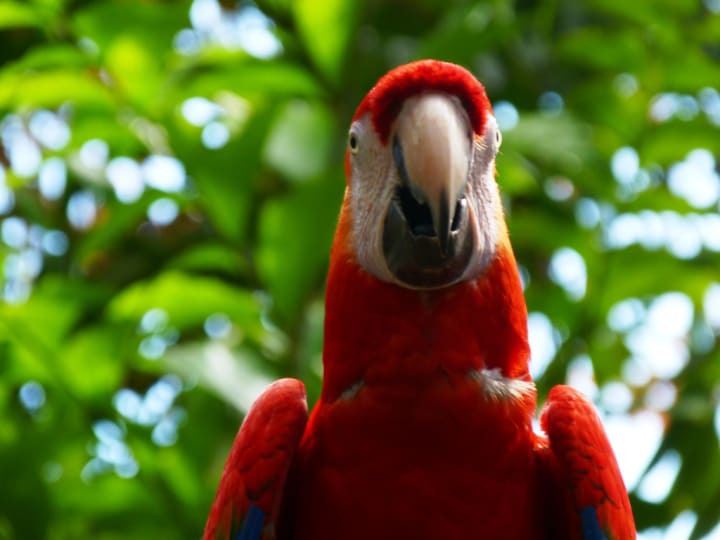
Number Seven:
You should think carefully before getting a Scarlet Macaw as a pet. They are very social and do not like to be left alone.
When left alone they frequently develop nervous habit such as tearing out their own feather.
If you do decide to get one as a pet, consider adopting instead of buying from a breeder. Many people after getting a macaw find they can not properly take care of it. The macaw become stressed, and they often are put up for adoption. There is also considerable cost associated with properly taking care of this magnificent creature.
Absolutely be sure that it was not taken illegally from its nest.
Sadly, this is what that beautiful bird can look like if not taken care of properly. This bird is very stressed and pulled out its own feathers.
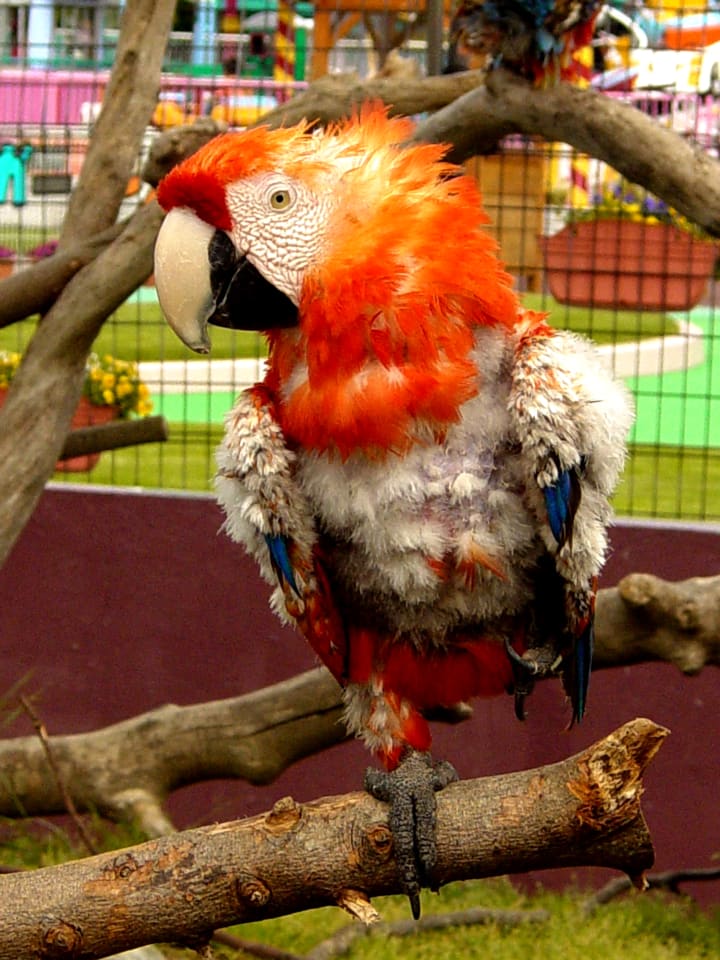
(I almost left this out, but awareness is important. This breaks my heart.)
Number Eight:
A Scarlet Macaw will lay 2 to 4 eggs once every 1 or 2 years. The incubation period is about 28 days. The young bird will stay with its parents for over a year.
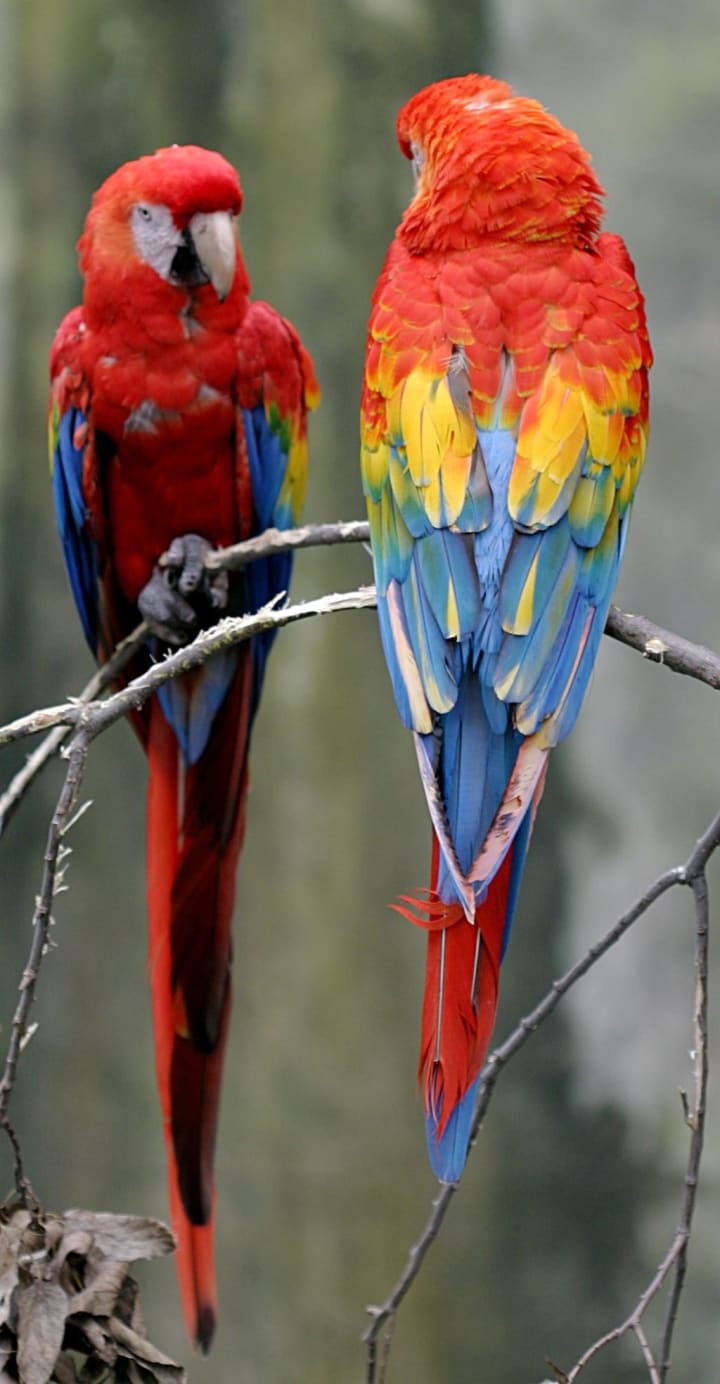
Number Nine:
The Scarlet Macaw has a wingspan of three feet.
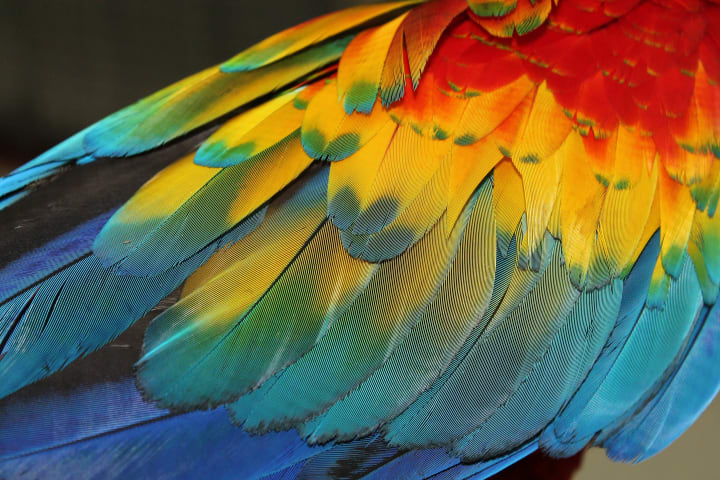
The Scarlet Macaw is a very beautiful and intelligent bird. When they take flight, their wings make very deliberate and powerful strokes. It allows them to glide through the air, and when they catch an updraft, they soar.
It is not enough to preserve them in captivity. Their habitat must be protected. The bird itself is magnificent, but to see it fly over the rainforest is nothing short of stunning.
I hope you have enjoyed learning about the Scarlet Macaw.
All Images in this article are either in the public domain or under a license that allows free distribution if appropriate credit is given.
About the Creator
Steve Lance
My long search continues.






Comments
There are no comments for this story
Be the first to respond and start the conversation.